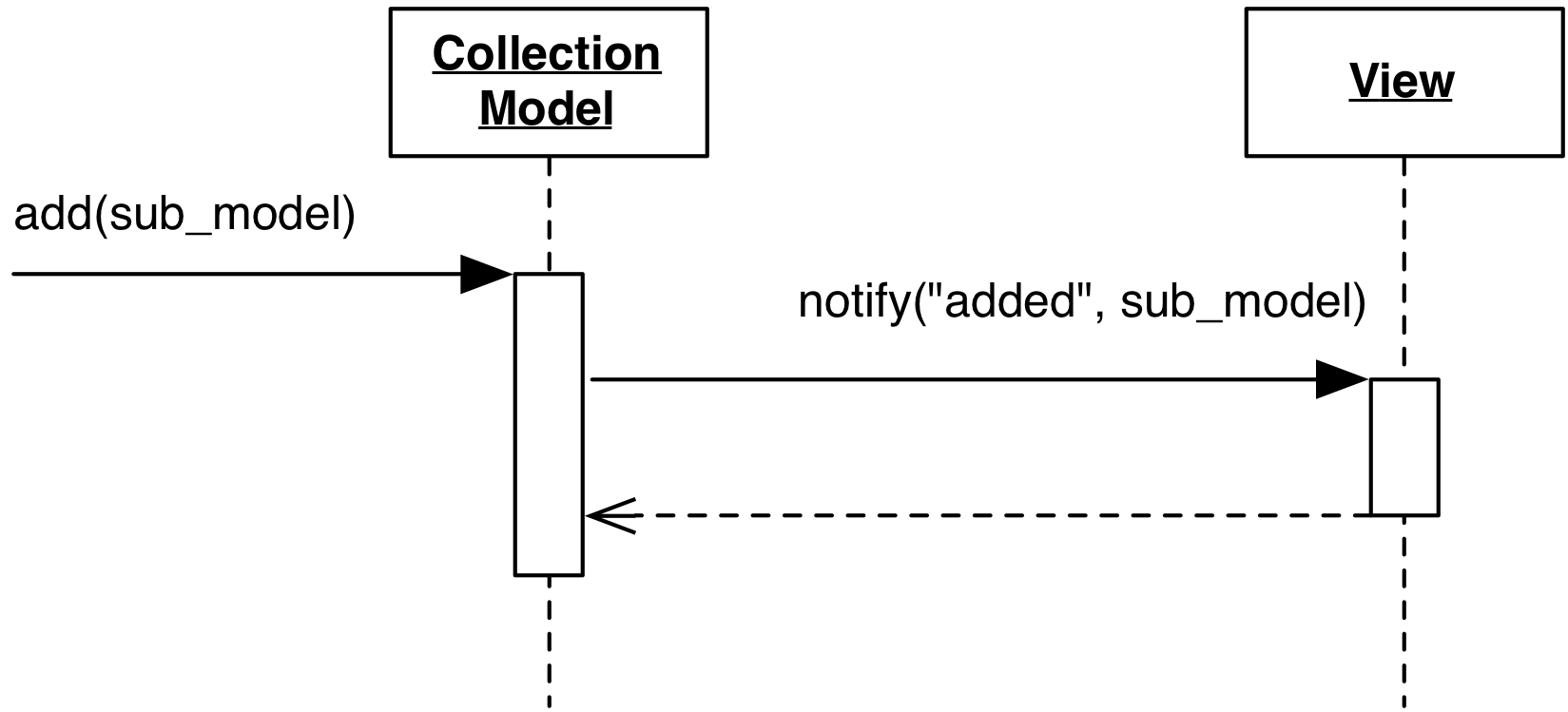2.1.10 Collection Model
Motivation
A Collection Model is an open-ended container of SubModels. It is similar in concept to the Compositing Model, but the similarities are only apparent. A Compositing Model:
- might be tailored to a specific number of SubModels.
- might hold SubModels of different types, handling and smoothing out their differences.
- aims at unifying data coming from its SubModels, so that their differences and separation are hidden to the View.
On the other hand, a Collection Model:
- Is an open-ended, potentially empty list of SubModels.
- The contained SubModels are of the same type.
- The Collection and its SubModels have independent nature and the objective of the Collection is not to hide the intrinsic separation of the SubModels, rather to refer to them as a group.
A trivial example of a Collection Model is an Album containing Song objects.
Design
The Collection Model is designed to notify its listeners when a SubModel is added, removed, or moved. In some cases, the collection model can also notify listeners when any of its SubModels changes.

More complex implementations may want to provide events and an interface for bulk addition, bulk removal, or bulk move of SubModels. Qualified messages can inform the listeners what kind of change has occurred, and which SubModels were affected.
Practical Example
Backbone.js Collection implements a Collection Model. The following code represents an example of the API described above
var album = new Backbone.Collection;
album.on("add",
function(song) {
alert("Song added callback executed.");
}
);
album.add([
{name: "Mozart collection"},
]);
References
- Backbone.js - http://backbonejs.org/